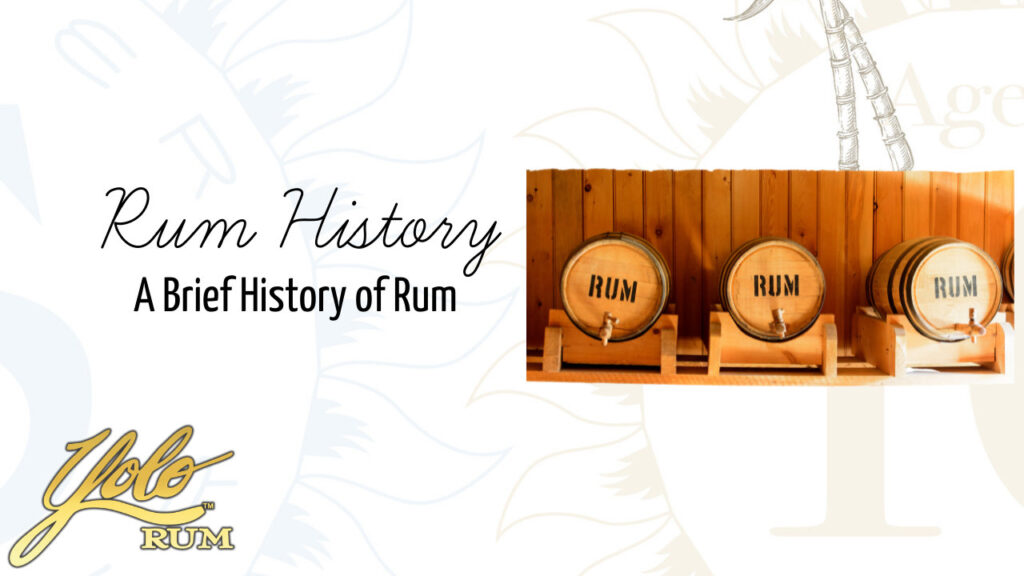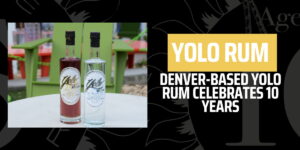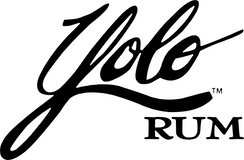The History of rum is just as diverse as the spirit itself.
What is Rum?
According to Wikipedia, “rum is a liquor made by fermenting then distilling sugarcane molasses or sugarcane juice.” Most rums are aged in oak barrels and produced in countries with extensive sugar cultivation like the Caribbean, North and South America, India, Taiwan, and the Philippines.
Rums are created in various grades, from light to golden to dark, and can be enjoyed over ice or consumed with mixers. It’s also a massive part of the culture in countries like the West Indies and Newfoundland and has been synonymous with many significant cultural events of our past.
Ancient History of Rum
Most people accept that rum was first created in the Caribbean in the 1700s, and indeed the Mount Gay Rum visitors center in Barbados dates back to 1703, making it the oldest active rum company in the world. But the true history of rum is much, much older. And while it wasn’t called ‘rum,’ creating ‘Shidhu’ was based on fermenting sugarcane juice, first mentioned in Sanskrit texts in the early 7th century by Vagbhata, an Indian Ayurvedic physician who encouraged his patients to mix the beverage with mango juice.
Another ancient drink said to be similar to rum is Brum. Some speculate that the name’s origins come from the Malay people, dating back thousands of years. Malays are an Austronesian ethnic group native to eastern Sumatra, Malay Peninsula, and coastal Borneo.
In his book, The Travels of Marco Polo, author Marco Polo describes “very good wine of sugar” offered to him in modern-day Iran between 1271 and 1295, and in 1364 Peter of Cyprus brought a rum-like beverage as a gift to dignitaries at the Congress of Krakow.
A More Recent History of Rum
The first creation of rum in the Caribbean took place on sugarcane plantations in the 17th century when it was realized that molasses, a byproduct of the sugar refining process, could be fermented into alcohol. Then, the distillation of these alcoholic byproducts concentrated the alcohol and removed impurities. Tradition suggests this type of rum first originated in the West Indies, according to a 1651 document. Although there’s evidence to suggest that it was produced in Brazil around the same time, the French replaced brandy with rum in the late 1700s, demonstrating its global influence.
After its development and popularity in the Caribbean, the drink spread to Colonial North America as demand for the beverage skyrocketed. The first rum distillery in the colonies was set up on Staten Island in 1664. Estimates of rum consumption in the American colonies before the revolutionary war were an impressive 70 gallons a year for every man, woman, and child. We don’t recommend giving your kids rum, but it’s interesting to realize how different life was back then.
The Molasses Act of 1733 and its successor, the Sugar Act in 1764, may have helped cause the American Revolution by unfairly taxing sugar imports to make rum. The history of rum has directly contributed to the United States’ bid for independence.
The Future of Rum
While mixologists continue to innovate new rum drink recipes, rum is increasingly being used in cooking and not just for rum cake or bananas foster but also in savory dishes. It’s perfect for making scrumptious sauces and syrups. Check out some of our rum and food pairings here!




